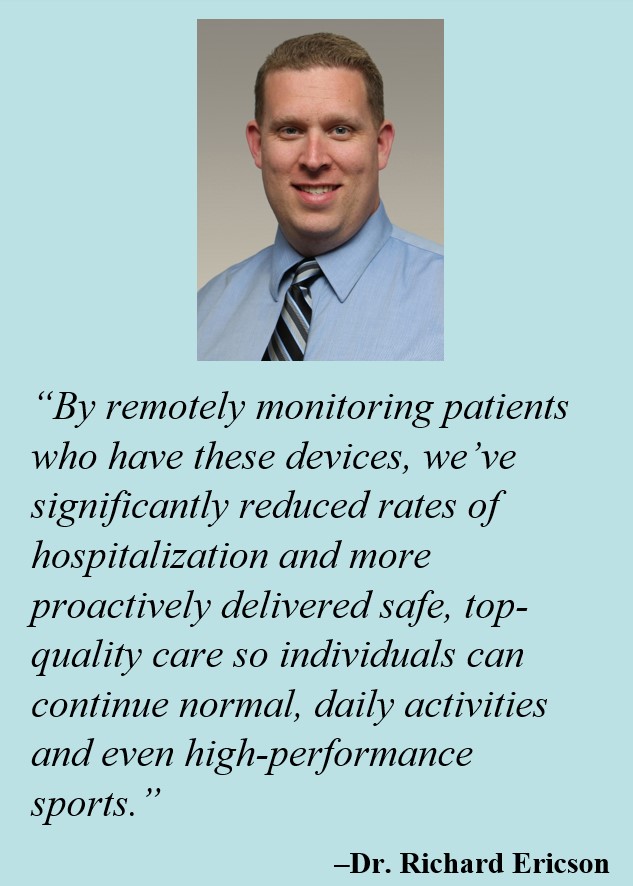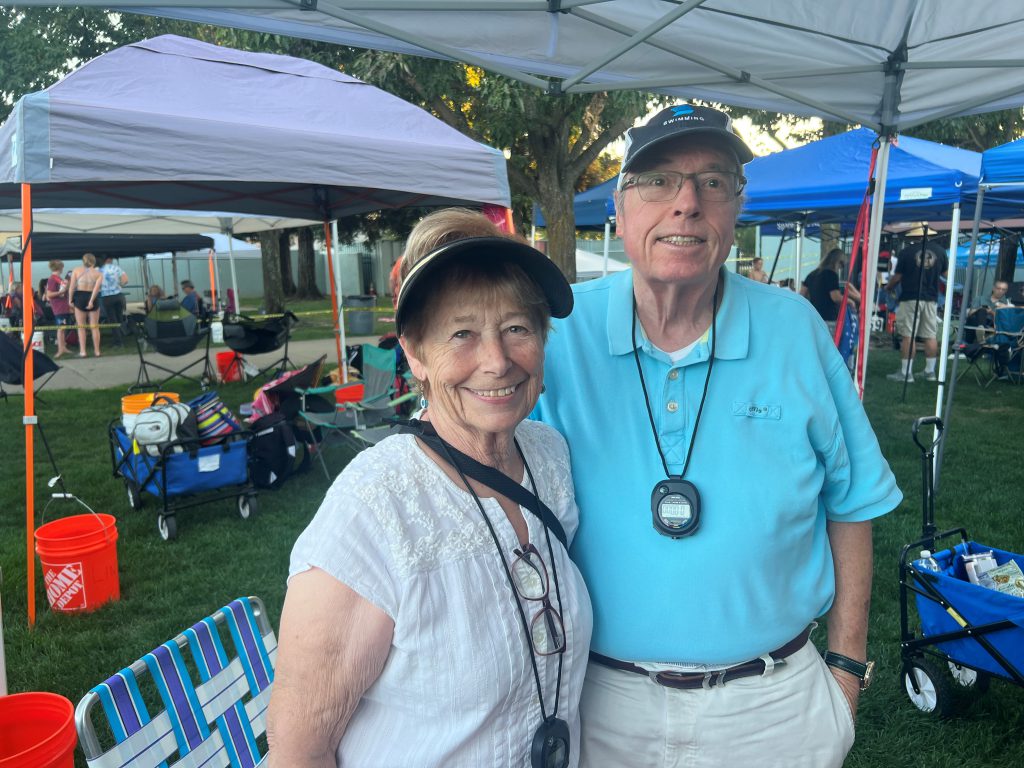Outfitted with a new pacemaker, bicycling enthusiast Bruce Patt is back on Sacramento County’s American River Bike Trail doing what he loves.
Patt’s speed and endurance while cycling were aided by the expertise of a care team with Sutter Health’s Cardiac Device Management Center. While remotely monitoring Patt’s previous pacemaker, specialists at the center noticed his heart was beating too slowly to handle exertion. After a minimally invasive procedure to implant a replacement pacemaker with enhanced capabilities, Patt was back again blazing the trail.
“This center helps us more efficiently monitor patients with implantable, electronic cardiac devices,” says Dr. Richard Ericson, a cardiologist with Sutter Medical Group practicing in Sacramento. “The collective experience of a systemwide team will help us gather and report on patient data that provide critical information to care providers — allowing us to deliver coordinated, high-quality, safe and even preventive cardiovascular patient care.”
How Patt’s Cardiac Journey Began
A 32-mile path lines the American River in Northern California’s Sacramento Valley. Patt has cycled the storied trail countless times, climbing the gently rolling hills between Sacramento and Folsom.

While bicycling, Bruce Patt “felt like I was dragging 100-pound weights tied to my bike.”
But his lengthy bike rides weren’t always effortless: nine years ago, the 77-year-old Fair Oaks resident began feeling abnormally winded and breathless while cycling with his friends.
“It felt like I was dragging 100-pound weights tied to my bike,” says Patt, who’s now back on two wheels thanks to new advances in technology for healthier hearts.
In 2015, Patt was referred to a Sutter cardiologist who performed an exercise stress test and electrocardiogram to check Patt’s heart’s functioning. Highly active and otherwise healthy, he was surprised by the diagnosis of bradycardia, a type of abnormal heart rhythm (or, arrhythmia) where the heart beats too slowly. People with this heart concern may experience symptoms like fatigue, weakness and shortness of breath.
“If bradycardia is severe or chronic, an implanted pacemaker may be needed to help the heart maintain an appropriate rate,” says Dr. Ericson. A pacemaker is what Patt’s doctors recommended to help restore his heart’s normal functioning.
Pacemakers Give Hearts a “Boost” and Remote Monitoring Helps Optimize their Performance
Patt began receiving treatment with a pacemaker to help manage his bradycardia. The small, battery-powered device helps prevent the heart from beating too slowly and can treat symptoms like fatigue, lightheadedness and fainting. Pacemakers also help individuals resume a more active lifestyle by automatically adjusting one’s heart rate to match their level of activity.
After several months with the pacemaker in his chest, Patt began noticing it wasn’t adequately working to moderate his heart rate during periods of high-intensity exertion while cycling.
 In parallel, Dr. Ericson and a team of Sutter Health cardiac device specialists were remotely monitoring the functioning of Patt’s pacemaker. By tracking data from the device (which gave key information about Patt’s heart and pacemaker function), the care team could virtually “see” that Patt’s heart wasn’t responding to increased exertion while he cycled.
In parallel, Dr. Ericson and a team of Sutter Health cardiac device specialists were remotely monitoring the functioning of Patt’s pacemaker. By tracking data from the device (which gave key information about Patt’s heart and pacemaker function), the care team could virtually “see” that Patt’s heart wasn’t responding to increased exertion while he cycled.
So doctors and cardiac device specialists at Sutter consulted with Patt and collaborated to optimize the pacemaker’s sensor for improved performance. The team ultimately recommended Patt be implanted with a different pacemaker that utilizes “dual sensor” technology for improved functioning during high-intensity physical activity.
After the pacemaker was replaced, and followed by in-office visits to Sutter’s Cardiac Device Clinic at Sutter Medical Center, Sacramento to optimize the sensor, Patt was able to resume high levels of exertion while cycling.
Remote Monitoring Center Brings Peace of Mind
Sutter Health launched its Cardiac Device Management Center across the not-for-profit’s integrated health system for remote monitoring of patients who have cardiac implantable electronic devices like pacemakers, defibrillators and loop recorders.
“Implantable electronic devices such as pacemakers can help transform the lives of individuals with cardiac arrhythmias,” says Dr. Ericson. “By remotely monitoring patients who have these devices, we’ve significantly reduced rates of hospitalization and more proactively delivered safe, top-quality care so individuals can continue normal, daily activities and even high-performance sports.”
For Patt, remote monitoring from the Cardiac Device Management Center has given him peace of mind, knowing that there are specialists making sure his heart is beating as it should.
“Having a dedicated team of cardiac device specialists collaborating to remotely monitor my pacemaker has brought me newfound freedom to cycle along the American River and beyond,” he said.
Do you or someone you love need cardiac care? Find services near you.





